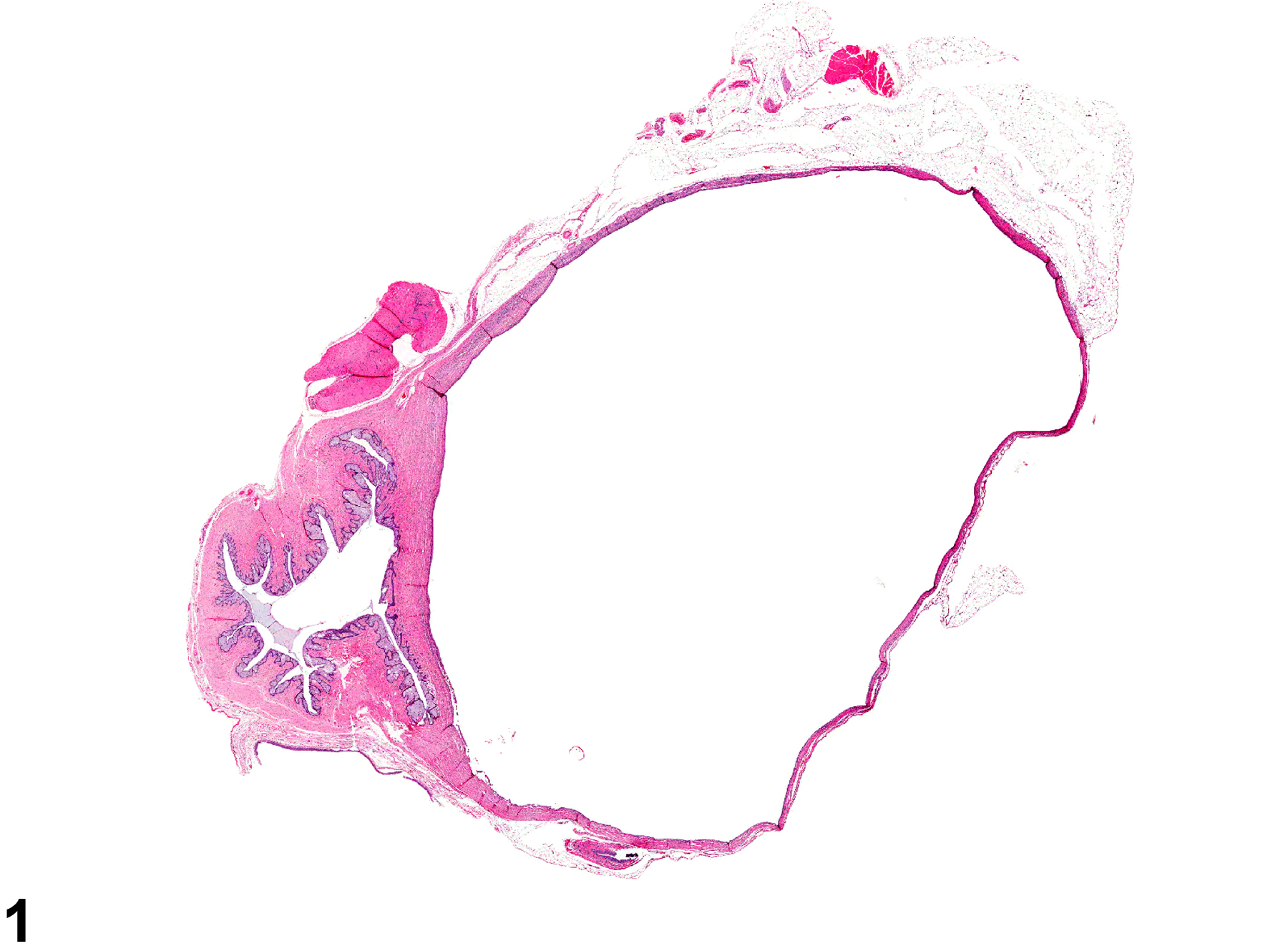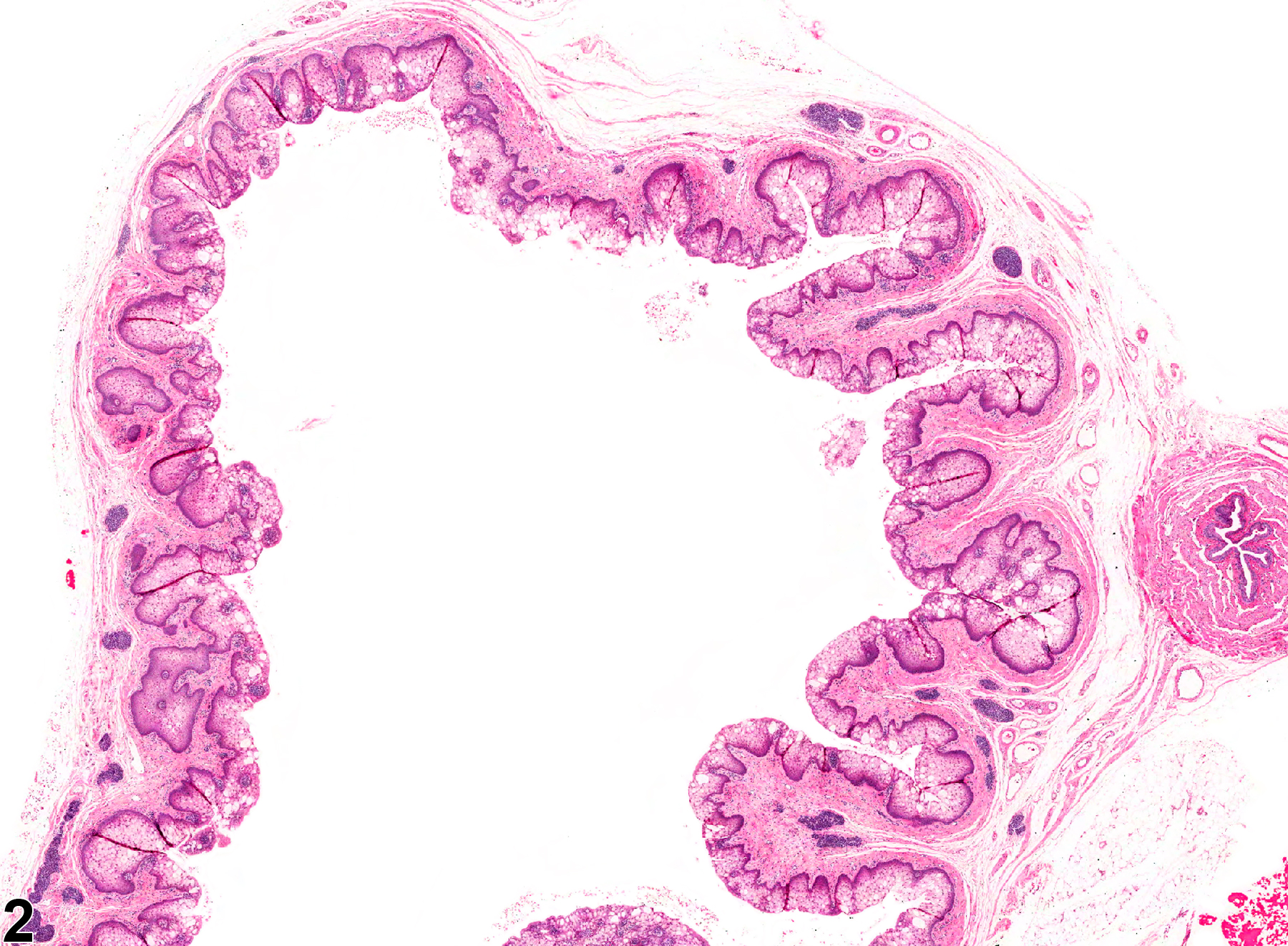Reproductive System, Female
Vagina - Dilation
Narrative
Dilation of the vagina (Figure 1 and Figure 2) usually occurs secondary to an imperforate vagina. An endodermal membrane normally occludes the vagina in the pup, and this typically disappears at puberty and the vagina becomes patent. When this does not happen, the consequence is cystic dilation of the vagina. This dilation may also be associated with mucometra, inflammation, and hyperplasia of the epithelium.
Vagina - Dilatation should be diagnosed and graded when the cause of the dilation is not apparent on the slide. However, if the vagina is imperforate, and this is apparent on the slide, then the diagnosis of imperforate vagina should be made. Secondary lesions, such as inflammation, should not be diagnosed separately unless warranted by severity.
Ginty I, Hoogstraten-Miller S. 2008. Perineal swelling in a mouse. Lab Anim (NY) 37:196-199.
Full Text: https://www.ncbi.nlm.nih.gov/pmc/articles/PMC2597298/Greaves P. 2012. Female genital tract. In: Histopathology of Preclinical Toxicity Studies: Interpretation and Relevance in Drug Safety Evaluations, 4th ed. Elsevier, Amsterdam, 667-724.
National Toxicology Program. 1992. NTP TR-388. Toxicology and Carcinogenesis Studies of Ethylene Thiourea (CAS: 96-45-7) in F344 Rats and B6C3F1 Mice (Feed Studies). NTP, Research Triangle Park, NC.
Abstract: https://ntp.niehs.nih.gov/go/12227National Toxicology Program. 2003. NTP TR-505. Toxicology and Carcinogenesis Studies of Citral (Microencapsulated) (CAS No. 5392-40-5) in F344/N Rats and B6C3F1 Mice (Feed Studies). NTP, Research Triangle Park, NC.
Abstract: https://ntp.niehs.nih.gov/go/14888
Vagina - Dilation in a female F344/N rat from a chronic study. There is dilation of the vagina.



